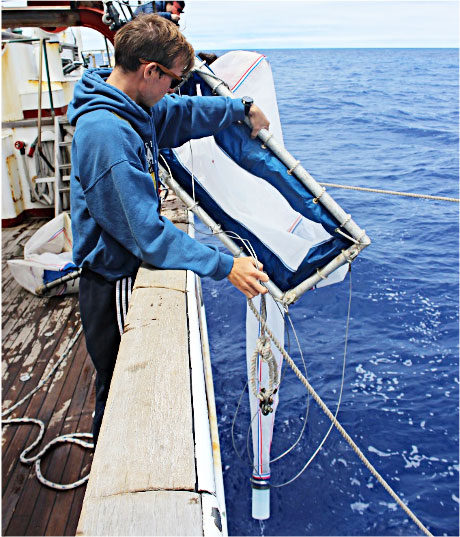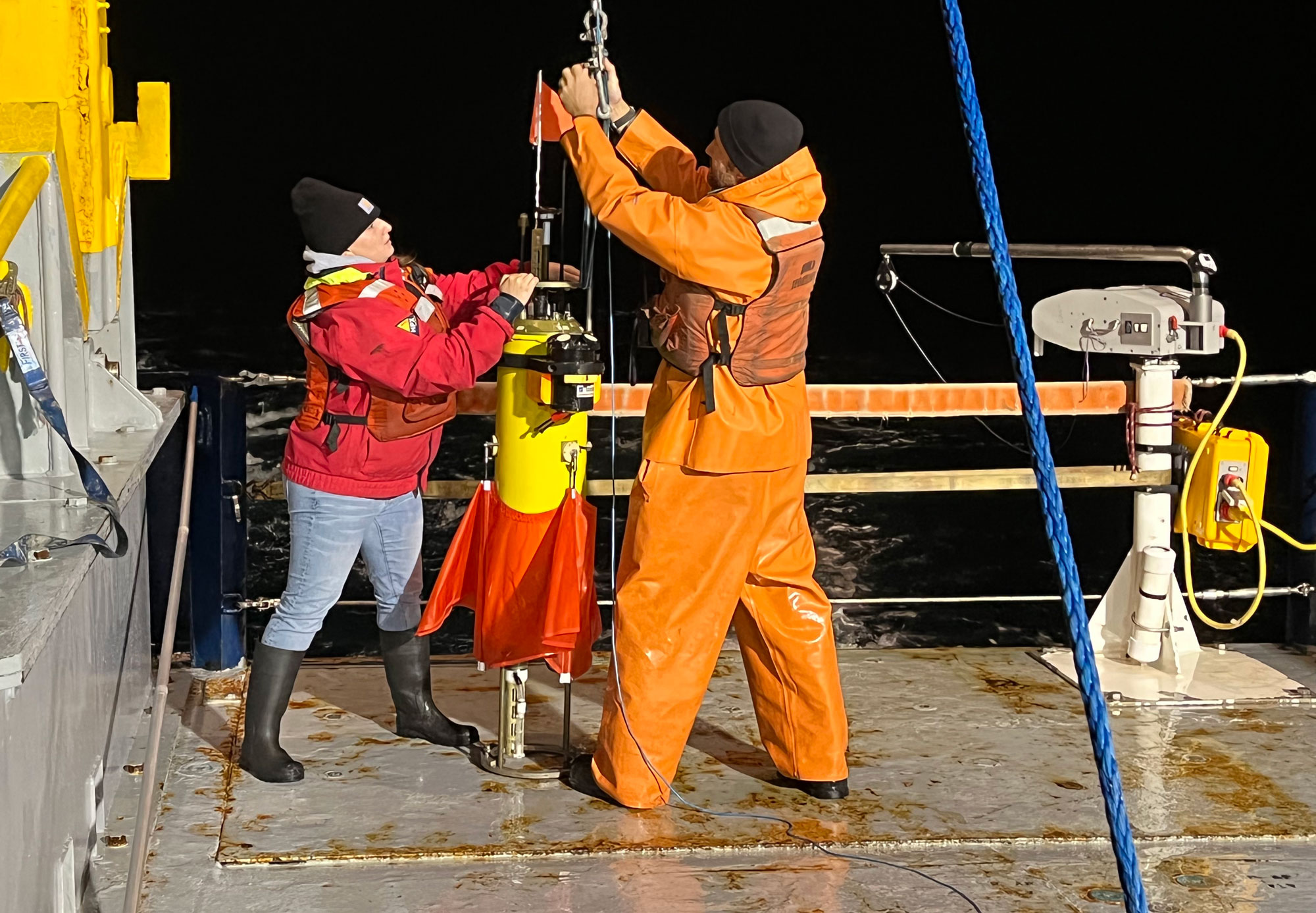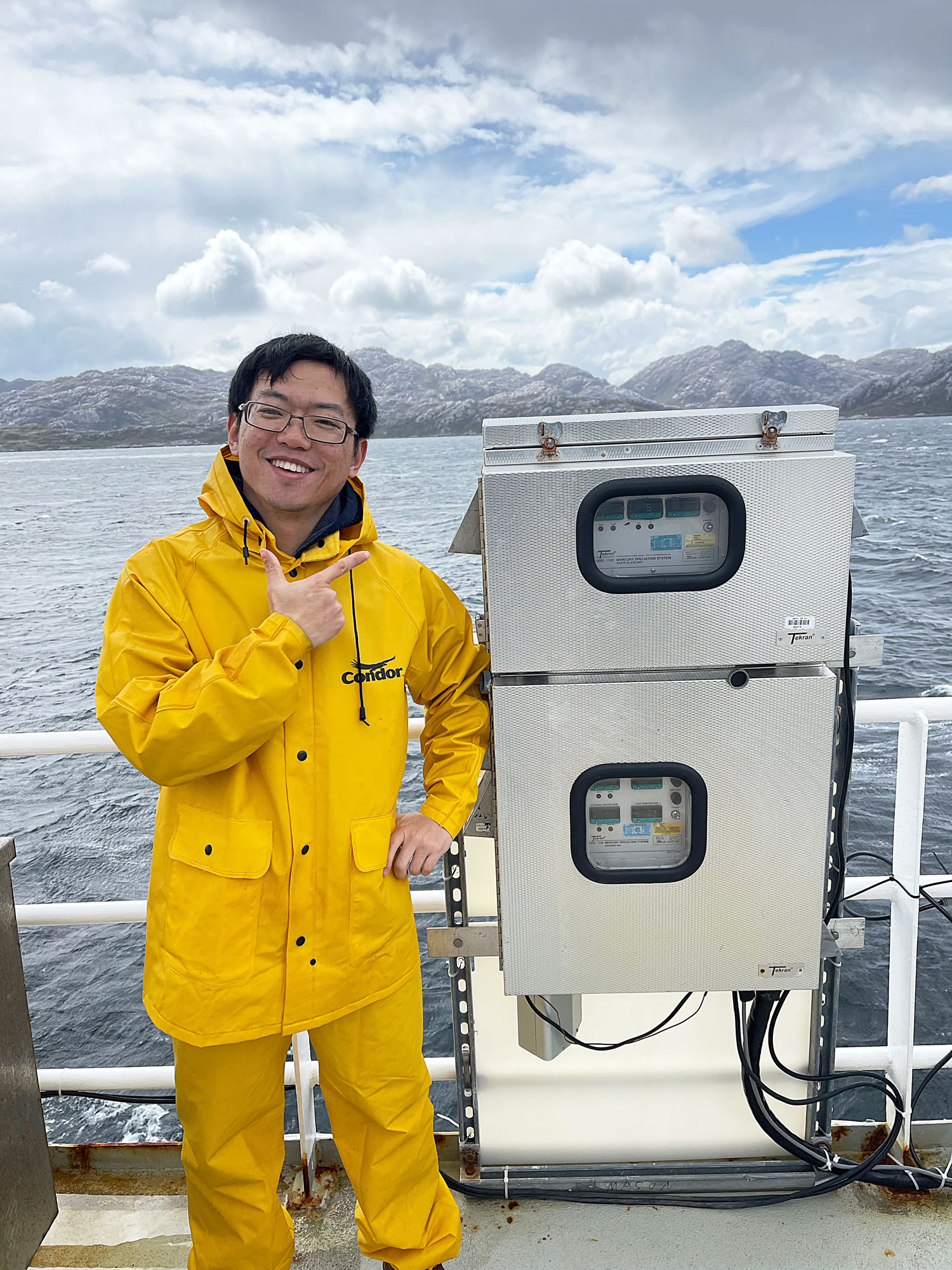Graduate student Catherine Crowley went on research cruises to investigate the contribution of small eukaryotes to new production in the North Pacific Subtropical Gyre.
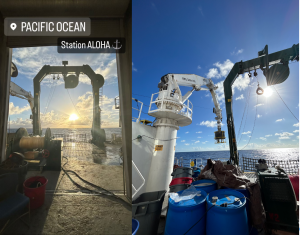
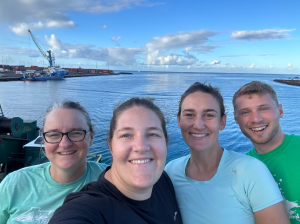
By Mengyang Zhou
Catherine (Katie) Crowley, a Ph.D. student in the Granger Laboratory, participated in two research cruises in the North Pacific Subtropical Gyre (NPSG) in the summer of 2023. The cruises, in August and September 2023, were aboard the R/V Kilo Moana as part of the Hawaiian Ocean Time Series (HOT) program at Station ALOHA (A Long-Term Oligotrophic Habitat Assessment). HOT is one of the longest-running time series in the ocean spanning over 30 years. This region of the Pacific Ocean is known as the “ocean desert”, with relatively little nutrients in the surface waters due to the low nutrient supply common in subtropical gyres. However, it is not well understood how certain phytoplankton living in surface waters in summer access the nutrients in the deeper waters. Katie’s research will investigate how particular phytoplankton (eukaryotes) access subsurface nitrogen at Station ALOHA, to better understand how the productivity in subtropical gyres will be impacted by climate change.
On the cruises this summer, she performed isotope incubation experiments and collected samples for nitrogen isotope analyses and cell counts. Back at UConn, she will sort the phytoplankton populations from the samples she collected on a fluorescence-activated cell sorting (FACS) flow cytometer and aim to examine their nitrogen composition, to reveal which nutrients these phytoplankton have a taste preference for in the subtropical gyre. She plans to present this work with her collaborators, the White Lab from the University of Hawaii) and the Marchetti Lab from the University of North Carolina at Chapel Hill) at the upcoming Ocean Science Meeting in 2024.
To reflect on her cruise experience this summer, Katie says: “These collaborative cruises allowed me to gain hands-on experience and learn about eukaryotic primary production in the Pacific Gyre. As a graduate student, I was able to collect data for my research and assist the HOT team with their time-series collections.”

